The
Ba Be National Park, a natural jewel of Vietnam, is much more than a haven of greenery. It is a territory where cultures meet and mingle, like the
five minority ethnic groups who reside there. Among them,
the Tay, with their rich history and ancestral traditions, deserve special attention.
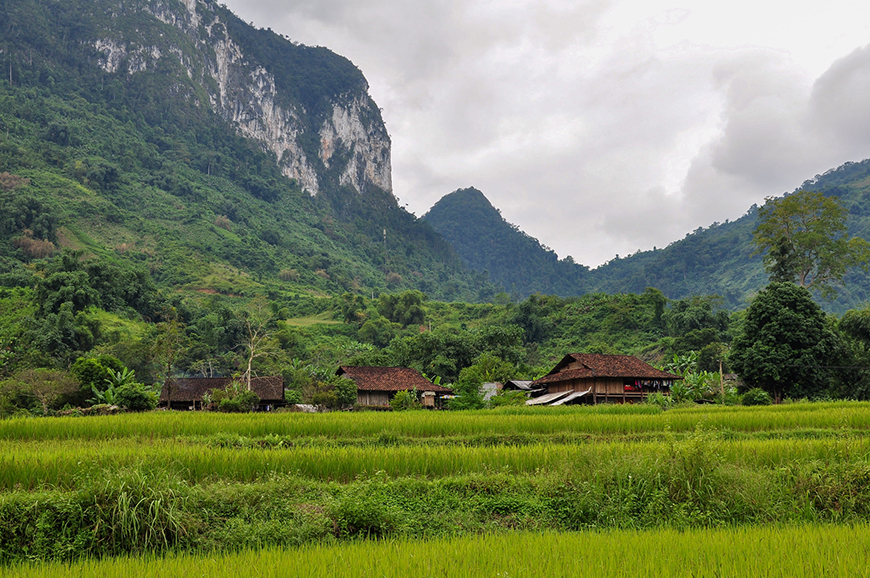
House on stilts, a traditional architecture of the Tay - Source : Mr Linh's Adventures
A bit of history, if you please...
The Tay, present in the region for over 2,000 years, are the largest minority ethnic group in Vietnam, with a population of 1.8 million (2019 census). Their origins date back to populations from China during the 11th and 12th centuries, who settled in the mountainous regions of northern Vietnam – notably Cao Bang, Lang Son, Bac Kan, Thai Nguyen and Quang Ninh. Their history is closely linked to that of the region, and their culture is a subtle blend of diverse influences. However, unlike the Nung, the Tay have been more deeply influenced by Vietnamese culture, due to their geographical proximity to the Kinh. They also shared certain cultural practices, such as the practice of blackening their teeth. This influence is such that at the beginning of the 20th century, nearly a third of their language was composed of words of Vietnamese origin.
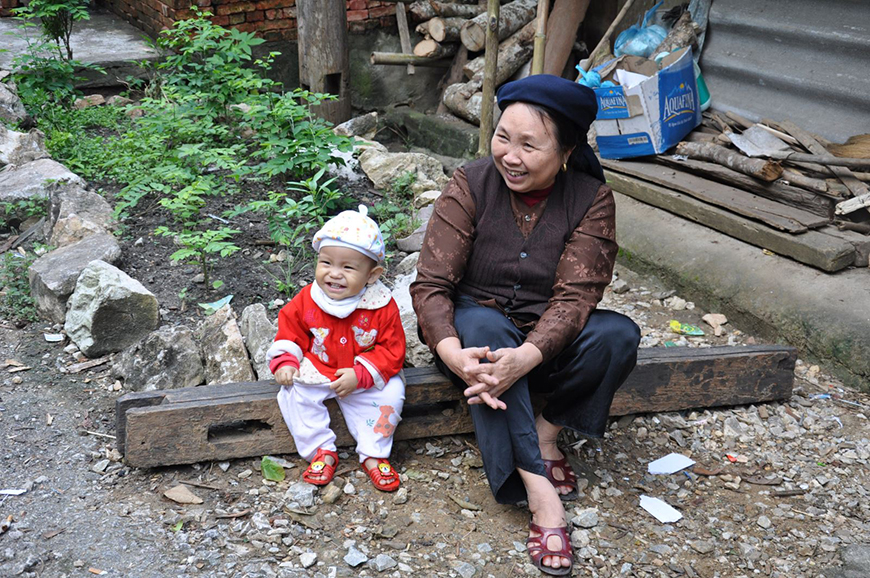
Grandmother Tay- Source : Mr Linh's Adventures
The Tay ethnic group, a community of five main groups
The Tho, Ngan, Phen, Thu Lao and Pa Di distinguish themselves by variations in their traditional clothing.
- The Ngan group wears shorter shirts than the others.
- The Phen group is distinguished by a brown outfit.
- The Thu Lao group is distinguished by a pyramid headband.
- The Pa Di group is distinguished by a hat in the shape of a roof. Pa Di women wear clothes with colored panels of fabric on the sleeves.
- The Tho group dresses like the Thai.
The Tay language: a precious heritage
The Tay language belongs to the Tai-Kadai language group. Although the literacy rate in their own language is quite low, the Tay are very attached to their language and their oral traditions. Their tales, legends and songs are passed down from generation to generation, thus perpetuating their cultural heritage.
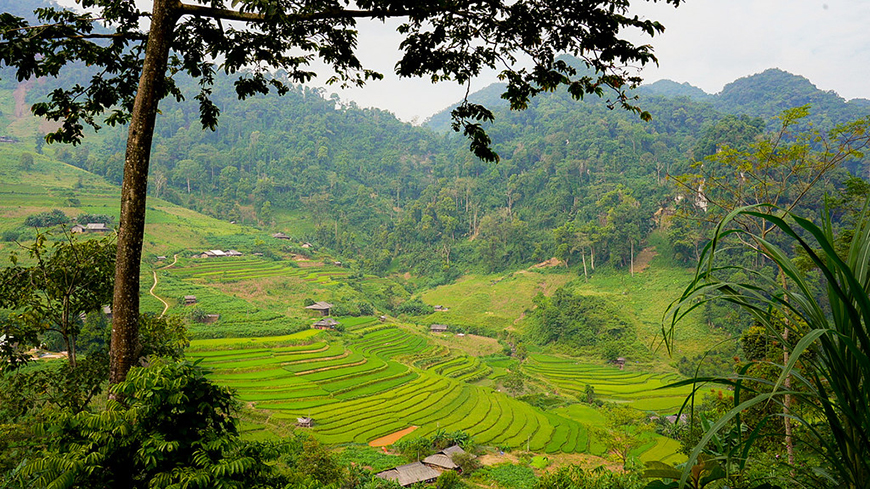
Rice Terrace in Ba Be National Park - Source : Mr Linh's Adventures
Daily life: between rice paddies and stilt houses
Today, the Tay of Ba Be live in the villages of Coc Toc, Pac Ngoi and Ban Cam, living from livestock and fishing. Their traditional stilt houses are a characteristic element of the landscape. These constructions, mainly made of wood, testify to ancestral know-how.
The architecture of Tay stilt houses
The stilt houses of the Tay of Ba Be are distinguished by their ingenuity and their adaptation to the environment. They are built mainly of wood, without the use of nails or cement. The different parts of the house are assembled using a tenon-mortise system, a technique that demonstrates a great mastery of construction.
Being on stilts, they have a space underneath that serves as a stable or storage, while the main living space is on the upper floor. The roof is often covered with straw or latanier leaves, providing natural insulation. The interior space is divided into several bays, without fixed partitions, which allows great flexibility. The central bay is reserved for the ancestors' altar, a sacred place in the house, while the side bays are open spaces used for various daily functions.
Tay houses generally have a single staircase at the main entrance, with nine steps, a number considered lucky. The construction or renovation of a house is a community effort, where neighbors help each other, thus strengthening social ties within the village.
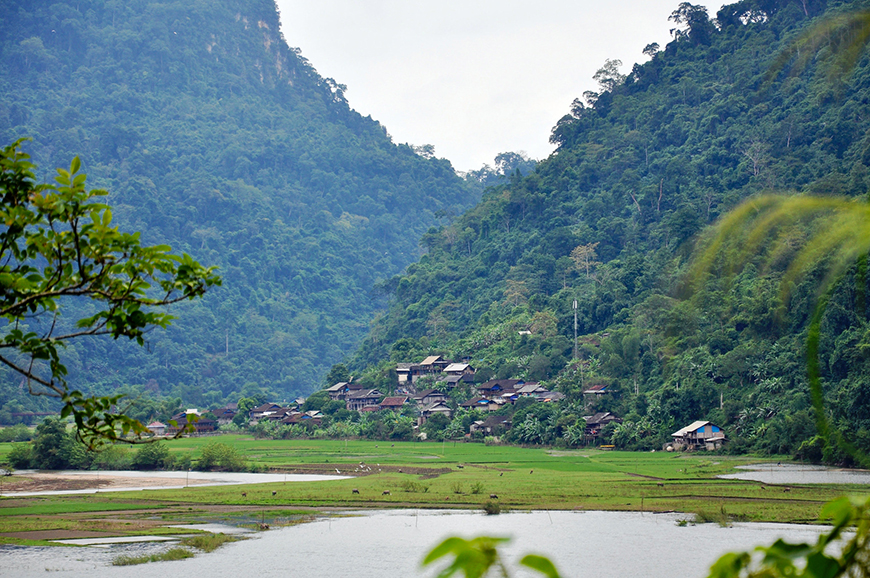
Pac Ngoi Village - Source : Mr Linh's Adventures
A precious cultural heritage
The Tay are very attached to their customs. Their traditional costumes, their dances and their songs are all testimonies of a rich and living cultural heritage.
The festivities
The festivals are an opportunity to get together, share meals and celebrate life. Among the most important, let us mention Tet Nguyen Dan, the Lunar New Year, a time of family reunions and renewal. The mid-July festival, dedicated to the worship of the souls of the deceased, is also an important moment of reflection and memory.
Beyond these celebrations common to many ethnic groups, the Tay have their own festivities, linked to agricultural cycles and community life. The "descent to the fields" ceremony (Long Tong), celebrated after the Lunar New Year, is a prayer for an abundant harvest. The "braising young rice" festival (Tăm Khảu Mảu), which marks the ripening of the rice, is a moment of joy and sharing.

Modern version of a Doc Moc Pirogue - Source : Mr Linh's Adventures
The Doc Moc pirogue
The pirogue, a typical fishing tool of the Tay of Ba Be, has also become a familiar image encountered during excursions on the lake. Called "doc moc", these pirogues are skillfully made from a single tree trunk. "Doc moc" pirogues are not only used for fishing. They are also used for transport, allowing residents to travel on the lake and reach their villages. They are an essential link with the surrounding nature, a means of subsistence and a symbol of the cultural identity of the Tay people.
The music
Traditional music occupies a special place in Tay culture. The "dan tinh", a traditional plucked string instrument, accompanies songs and dances, and punctuates religious ceremonies. The Then chant, a vocal art classified as a national intangible cultural heritage, is a deep poetic and spiritual expression. It tells stories, transmits legends and celebrates gods and ancestors. Beyond entertainment, Yay music is a language of the soul, a link with the past and a source of pride for an entire people.
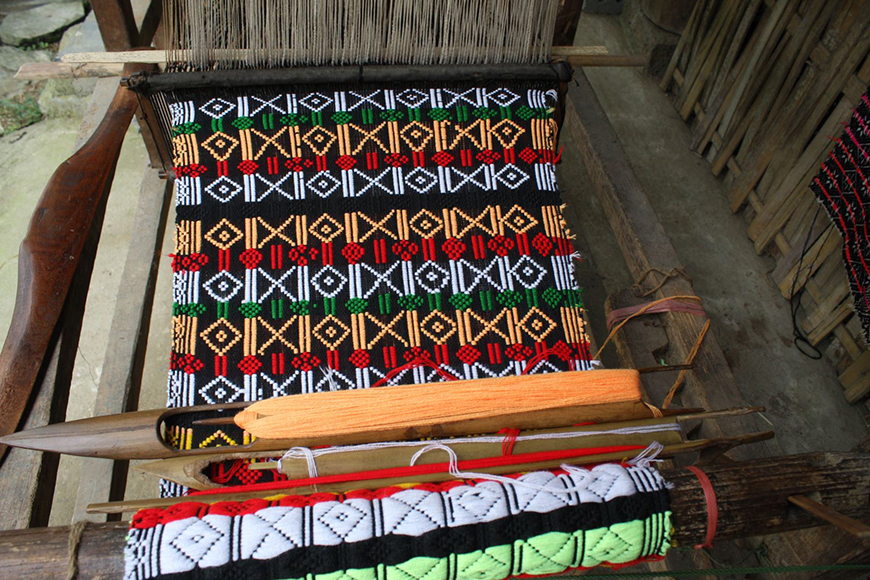
Handmade Tay Brocade - Source : Collected
Religion and traditions: a strong link
The majority of Tay practice Then, an indigenous religion involving the worship of tutelary gods, gods of the natural environment, ancestors and progenitors of human groups. This system of beliefs is inspired by various sources, including Taoism and Chinese folk religion. The god of the universe, the Jade Emperor, occupies a central place in the Then pantheon. He is considered the supreme sovereign, the one who governs the cosmos and the world of spirits. In some local traditions, such as in the district of Quang Hoa de Cao Bang, the Jade Emperor is also identified with the Yellow Emperor (Hoàng Đế), a mythological figure in Chinese history.
Religious ceremonies are an opportunity to recite Chinese characters, although nowadays, many use glosses, as the teaching of Chinese characters is not provided in Vietnamese schools. An altar for ancestors is usually placed in a central place in the house, and some families have also adopted Mahayana Buddhism.
Did you know? The Tay, Nung and San Chay use a set of altar paintings called "Thap Dien Diem Vuong" in the funeral rituals of Taoist masters.

Long Tong Festival - Source : Collected
Tay gastronomy: an authentic culinary journey
The cuisine of the Tay of Ba Be/Bac Kan is like their culture: rich, authentic and tasty. It gives pride of place to local products, prepared with ancestral techniques.
The journey begins with a Banh Cooc Mo, a symbol of prosperity and sharing. This delicacy made from glutinous rice, mung beans or black beans, and sometimes pork, is wrapped in banana or dong leaves. Its conical shape, which resembles buffalo horns, gives it a unique appearance. Its soft texture and slightly sweet taste, enhanced by the richness of the filling, will whet your appetite.
Then, let yourself be tempted by a dish of purple taro and pork belly, a bold and tasty combination. The taro, sweet and melting, goes wonderfully with the richness of the pork, all simmered in a fragrant sauce. A dish that warms the heart and taste buds.
For a unique taste experience, dare to try fermented shrimp (tôm chua). These small creatures, marinated in a special sauce made from salt, garlic and chili peppers, offer an explosion of flavors in the mouth. Acidic, slightly spicy and crunchy, they surprise and delight at the same time.
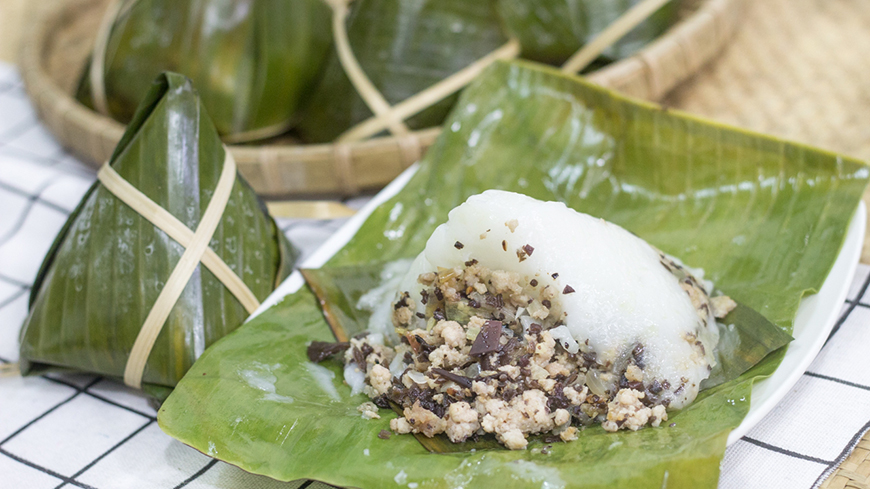
Banh Cooc Mo - Source : Internet
Seafood is also in the spotlight. Grilled fish, often accompanied by a dipping sauce made from nuoc mam, lime juice, chili and garlic, is a simple but tasty dish that highlights the freshness of local ingredients.
Meat lovers will not be left out. Smoked pork, a local specialty, is a delight for the senses. Its powerful taste and melting texture, combined with fresh vegetables or fragrant rice, make it an unmissable dish.
For a light and refreshing break, let yourself be tempted by a fish soup (canh cá). This light broth made from fish, vegetables and aromatic herbs, often accompanied by rice vermicelli, is a real treat.
Finally, how can we not mention glutinous rice (xôi), a staple food of Tay cuisine, served during festivities. Its sticky texture and slightly sweet taste make it an ideal accompaniment to many dishes.
So, ready to go and meet the Tays of Ba Be?
If you are passing through the region, do not hesitate to venture into the Tay villages. You will be greeted with a smile and you will discover a people proud of their traditions and happy to share them. And who knows, maybe you will have the chance to taste their local cuisine, both tasty and authentic.